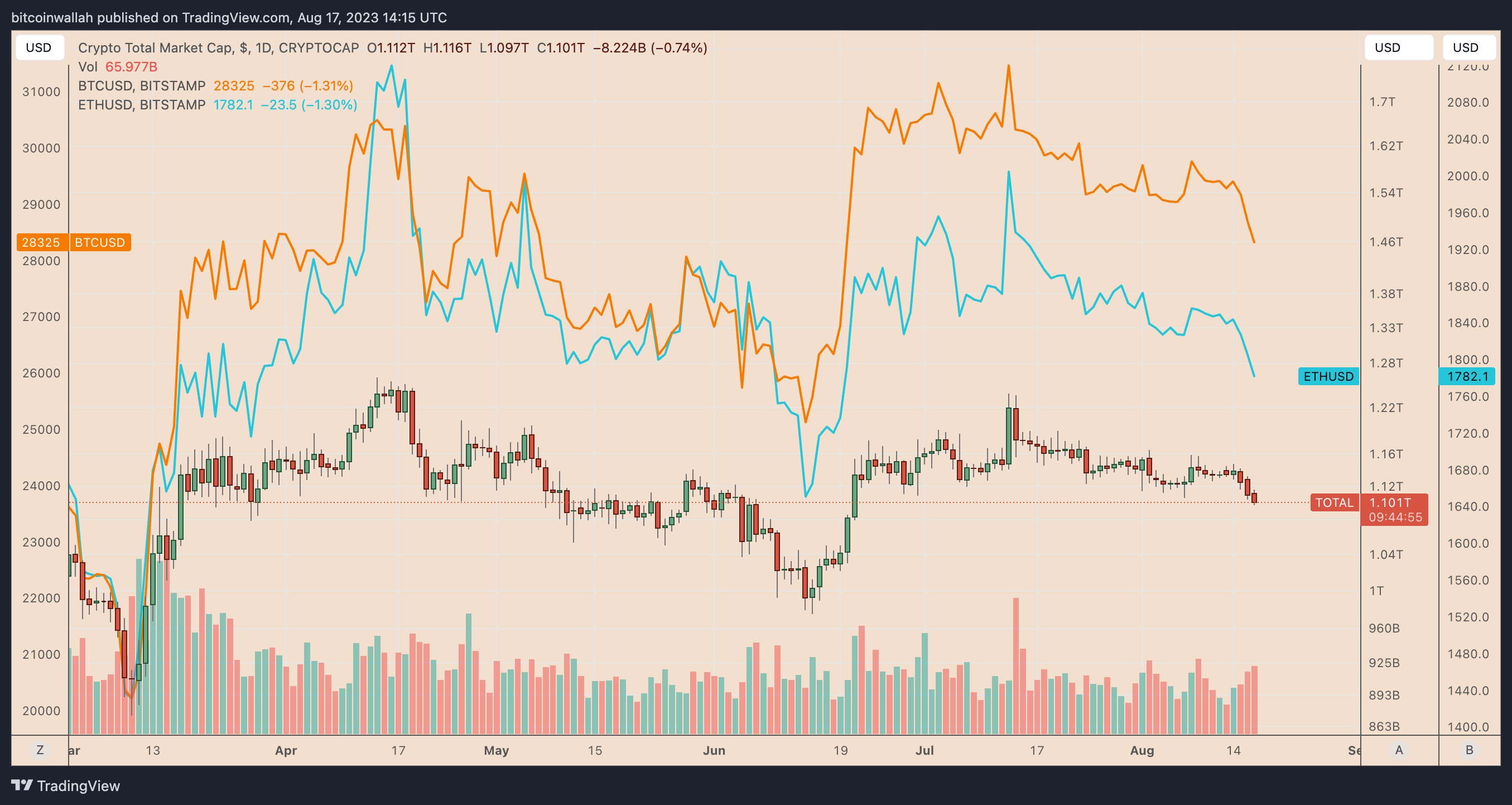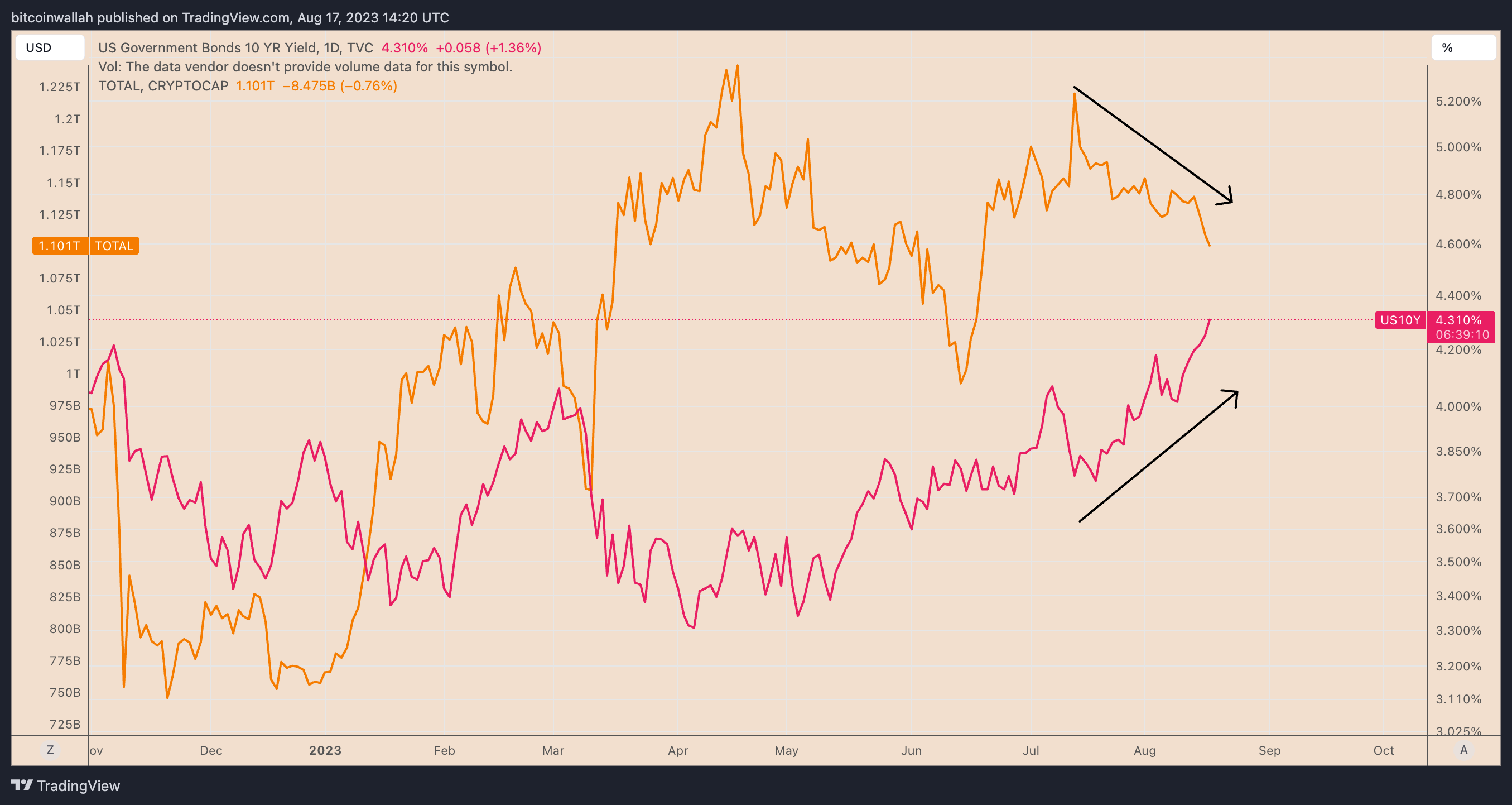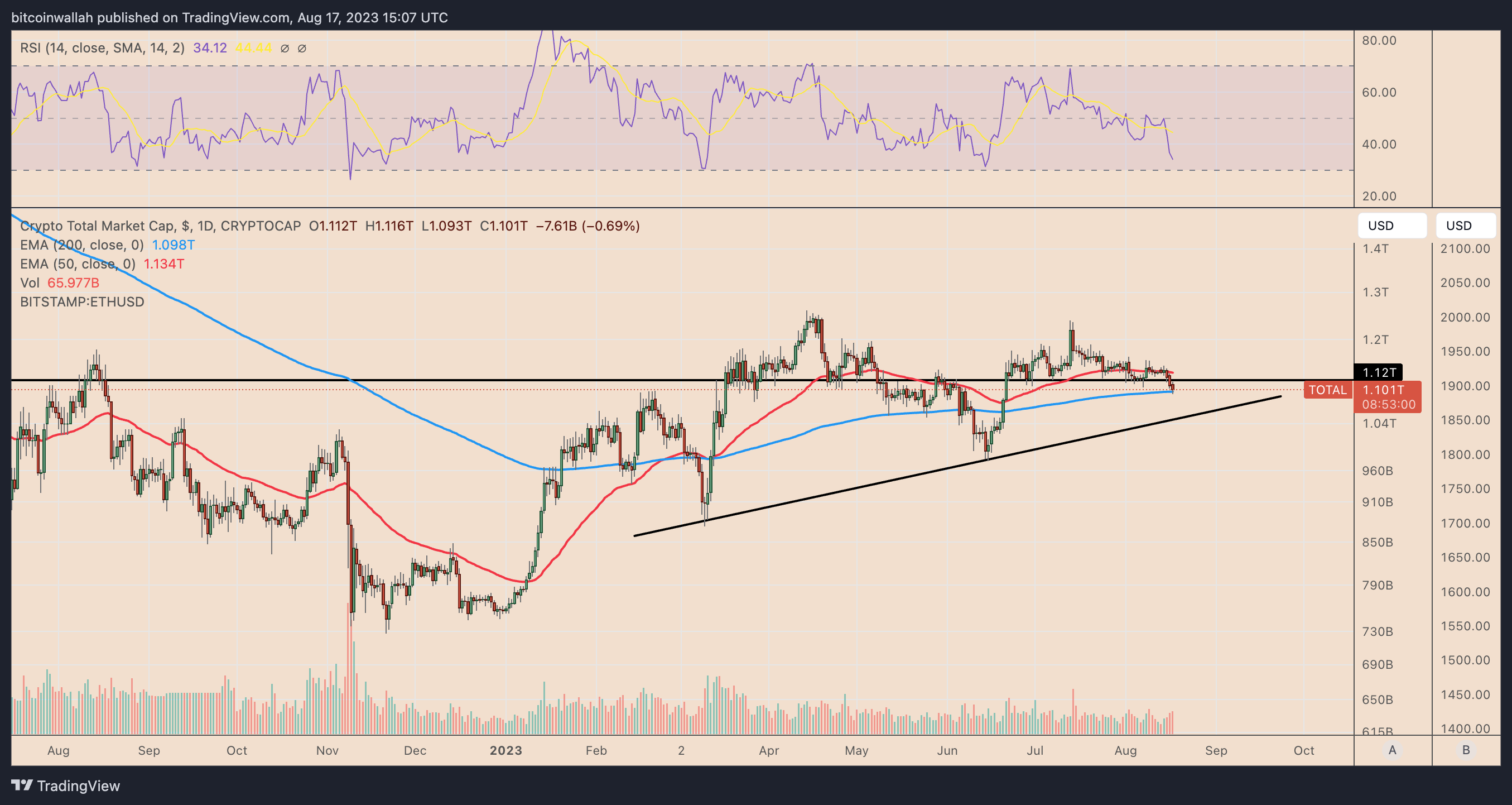The price trends in the cryptocurrency market continued to decline today, influenced by rising US treasury yields. With the rise in US treasury yields, investors are withdrawing their funds from cryptocurrencies such as Bitcoin, which do not guarantee returns, and turning to safer methods.
The Lowest Levels in Two Months
On August 17, the total cryptocurrency market value decreased by 2.23% to $1.084 trillion, reaching the lowest level in the past two months. Meanwhile, Bitcoin, which constitutes 50% of the total cryptocurrency market, dropped by 2.73% and now carries the risk of falling below $28,000, while Ethereum lost 3.68%.

The cryptocurrency market has been in a decline since mid-July, coinciding with the gains of the US dollar index (DXY) during the same period. The decline aligns with the rise in US treasury yields. The yield of the benchmark 10-year US Treasury bond reached 4.31% on August 17, reaching the highest level since October 2022. This indicates that investors are turning to safer assets instead of non-yielding cryptocurrencies like Bitcoin.

Yields jumped after the hawkishness of the Federal Open Market Committee’s (FOMC) July meeting minutes were reiterated. In particular, the belief of most Fed officials that inflation could remain high without further interest rate hikes increased the expectations of a new interest rate hike in September. Higher rate expectations have historically been downward for the cryptocurrency market, which likely explains the decline on August 17.
However, implied Fed funds futures rates suggest initial interest rate cuts around May-June 2024. Nevertheless, it is expected that the Fed rates will remain in the current range of 5.25-5.50% until then.
What’s Ahead?
The cryptocurrency market currently has a daily Relative Strength Index (RSI) of 33.75, which is nearly four points above the typical oversold threshold. In other words, there is a high chance of the market stabilizing or recovering in the coming days.

Furthermore, the market is testing the 200-day exponential moving average (200-day EMA; blue wave) support around $1.098 trillion. If this support holds, it would be a good place for a bounce towards $1.166 trillion with an increase of over 3% from the current levels. On the other hand, bears will try to pull the market below the rising trendline support around $1.053 trillion with a approximately 4% drop from the current levels.


 Türkçe
Türkçe Español
Español









